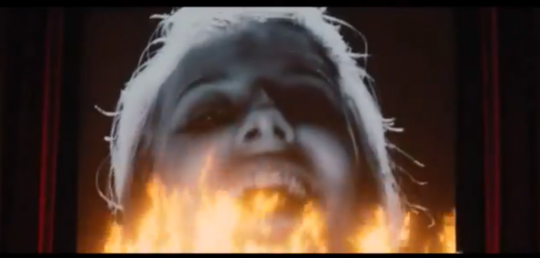Much ink has been spilled, and many bytes generated, about the climactic sequence in Quentin Tarantino’s Inglourious Basterds. In this scene, the Nazi high command—Hitler, Goebbels, etc.—has gathered at a small French cinema owned by the secretly Jewish Shosanna, whose family was executed by an SS officer earlier in the film. They are there to view Goebbels’ masterpiece, a propagandistic retelling of the exploits of "The German Sergeant York," a young man who single-handedly killed 250 Americans during a three-day stand.
As the film reaches its bloody crescendo—as its star turns to the camera and asks, "Who wants to send a message to Germany?"—the face of Shosanna replaces that of the heroic Nazi. She has spliced herself into the picture in order to tell the gathered Germans that their days are numbered. "I have a message for Germany: That you are all going to die," she says, a grim smile on her face. "I want you to look deep into the face of the Jew who is going to do it. Marcel: Burn it down." A fire rises from behind the screen, and the projected image of her face is consumed by flame as the auditorium fills with smoke.
As the theater burns, two of the basterds break into the Fuhrer's box, machine-gunning Hitler and Goebbels. Immediately following this we see Germans scurrying like rats, clawing over one and another in desperate panic as they stampede toward the locked doors at the front of the theater. "My name is Shosanna Dreyfuss," we hear her disembodied voice pronounce. "And this is the face of Jewish vengeance."
Let us leave aside the very literal interpretation of this scene—in which the Nazi high command is reduced to ash, an obvious echo of the crematoria in the camps—and instead focus on a broader idea. Because when Shosanna says, "This is the face of Jewish vengeance," she is speaking not only of her own face. She is also speaking of the movie screen itself.
The Nazis understood all too well the power of film. Goebbels, in particular, was deeply frustrated by the inability of the Nazis to quickly replenish their corps of filmmakers, many of whom had either fled Germany or been forced out for being Jewish. The films of Riefenstahl are the only true masterworks to emerge from Nazi Germany, and through them one gets a sense of how the Nazis saw themselves and their ascent: pure of blood, beautiful of face, strong of body, finely tuned instruments of national socialism. Cinema was a perfect device to project Nazi power to the world.
In an ironic twist, however, Goebbels’ preferred medium was used, and is used, on a regular basis to portray the evils of Nazism. Movie stars know that the surest way to capture gold during award season is to appear in a movie about Nazis, the more evil the better. Instead of supermen marching ever forward, the lasting images of the thousand-year Reich are of Goebbels grunting and wheezing like a disgusting pig while he has sex with a bored woman and of Hitler wearing a ridiculous cape and impotently screaming "NEIN NEIN NEIN NEIN!"
This is the face of Jewish vengeance. In the decades since World War II, an art form and an industry that was created by Jewish immigrants has crafted the shared cultural memory of the Third Reich, and will shape the perceptions of generations to come. There will be no "reconsideration" of Hitler.
For the attempted annihilation of the Jewish people, the Nazis will forever be the great monsters of the world, a nightmare brought to life via celluloid and speakers. It is a fitting punishment.
